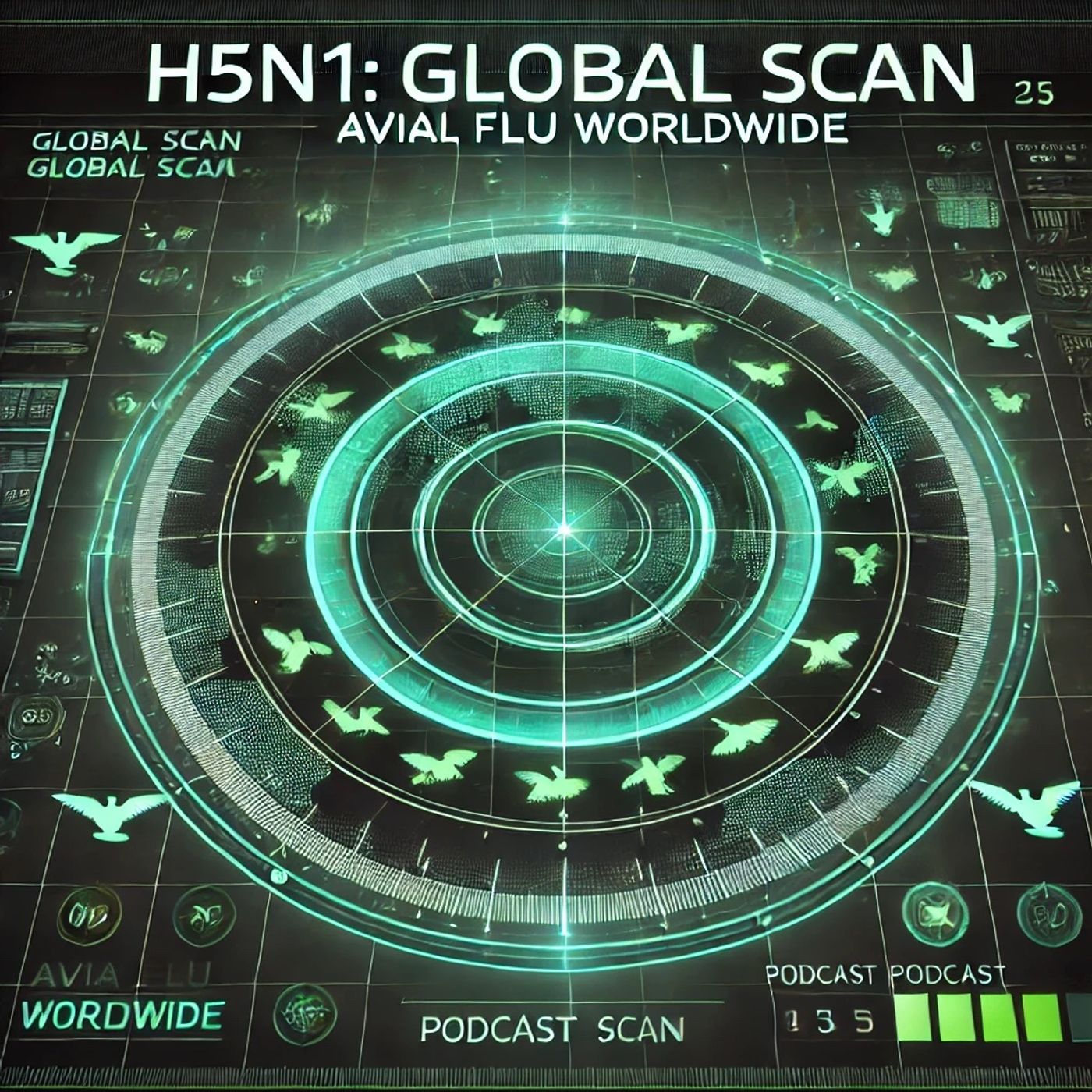Podcast Episode Details
Back to Podcast Episodes
H5N1 Avian Flu Spreads Globally: 26 Human Cases Reported Worldwide with Pandemic Potential Sparking International Concern
This is H5N1 Global Scan: Avian Flu Worldwide, your three-minute international focus.
As of August 2025, the H5N1 avian flu crisis continues to shape global health policy. According to the CDC and WHO, H5N1 remains widespread in wild birds and poultry on every continent except Australia. Sporadic human infections are reported annually. Since January, 26 global human cases have been detected, with 11 fatalities—mainly in Cambodia, India, and Mexico. The World Health Organization notes that person-to-person transmission remains absent for now, but the risk of a pandemic persists if the virus mutates and spreads more easily between people.
Continental breakdown shows Asia remains the epicenter for human spillover. Cambodia reported a surge with at least 11 cases in the first half of this year. India and neighboring Southeast Asian countries continue surveillance as H5N1 circulates extensively among backyard poultry. In North America, the U.S. saw three human cases early in 2025, all with known animal exposure. Latin America, especially Mexico and Peru, report increasing animal outbreaks. Europe experiences frequent poultry farm outbreaks; the UK and France have implemented rapid culling and worker monitoring. Africa continues to struggle with underreporting and outbreaks among wild birds. Australia remains a rare exception, staying H5N1-free.
International research has grown in urgency. Collaborative efforts between the CDC, FAO, and regional health agencies focus on characterizing new H5N1 strains, understanding cross-species transmission, and improving animal surveillance. According to the Pan American Health Organization and the FAO, recent research highlights the increased detection of H5N1 in non-avian species, including marine mammals and livestock—a sign of the virus’s adaptability. The UN’s Global Center for Health Security hosts regular multinational meetings to share outbreak trends and response lessons.
WHO and FAO have restated that while the current public risk remains low, especially for non-farmers, the situation demands constant vigilance. Both organizations urge nations to report novel flu cases immediately, coordinate on rapid culling, and invest in data-sharing. The Food and Agriculture Organization warns that international trade in poultry and eggs faces continued disruptions, as importing countries enforce bans and stringent controls, causing significant economic strain in export-dependent nations.
Cross-border issues remain acute. Migratory bird routes, porous borders, and the global nature of agricultural trade complicate attempts at containment. Trade restrictions and supply shocks ripple across continents, as seen with egg shortages in the U.S. and massive poultry culls in Asia and Europe.
On vaccine development, global research coalitions have several H5N1 vaccines in the pipeline, including advanced protein-based and mRNA platforms. Some countries in Asia have initiated poultry vaccination campaigns. In the U.S. and EU, public health stockpiles are growing, but mass distribution for humans will only begin if efficient human-to-human transmission emerges.
Finally, countries differ in approach. China, Vietnam, and Thailand focus on mass poultry vaccination and live market monitoring. The U.S. and EU prioritize culling, farm biosecurity, and worker protective equipment. Developing nations, hampered by fewer resources, lean on community awareness and rapid outbreak response.
Thank you for tuning in to H5N1 Global Scan: Avian Flu Worldwide. Come back next week for more international insights. This has been a Quiet Please production. For me, check out Quiet Please Dot A I.
For more http://www.quietplease.ai
Get the best deals https://amzn.to/3ODvOta
Published on 3 days, 17 hours ago